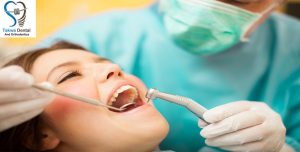
Dental caries, commonly known as tooth decay or cavities, is a prevalent oral health issue affecting individuals of all ages. If left untreated, dental caries can lead to pain, infection, and even tooth loss. Fortunately, several treatment options are available to effectively address dental caries and restore oral health. In this comprehensive guide, we will explore the various methods used to treat dental caries and prevent further damage.
Diagnosis and Assessment
The first step in treating dental caries is a thorough diagnosis and assessment by a dental professional. During an examination, your dentist will visually inspect your teeth, use a dental probe to check for soft spots on the enamel, and may order dental X-rays to detect caries in between teeth or beneath the surface. Based on the severity and extent of the caries, your dentist will determine the most appropriate treatment approach.
Dental Fillings
Dental fillings are one of the most common and effective treatments for dental caries. After removing the decayed portion of the tooth, your dentist will fill the cavity with a suitable material, such as amalgam (a mixture of metals) or tooth-colored composite resin. Fillings restore the tooth’s shape, function, and strength, preventing further decay and reducing sensitivity.
Dental Crowns
For more extensive tooth decay or weakened teeth, dental crowns may be recommended. A dental crown is a custom-made cap that covers the entire tooth, restoring its shape, strength, and appearance. The decayed portion of the tooth is removed, and the crown is placed over the remaining structure. Crowns can be made from various materials, including porcelain, metal alloys, or a combination of both, depending on the location and aesthetic considerations.
Root Canal Therapy
When dental caries progress to the innermost layer of the tooth, known as the pulp, it can cause severe pain and infection. In such cases, root canal therapy is performed to remove the infected pulp and save the tooth. During the procedure, the dentist removes the pulp, cleans and disinfects the root canals, and fills them with a biocompatible material. The tooth is then sealed and protected with a crown. Root canal therapy effectively treats infected teeth and alleviates pain.
Dental Bonding
For small or superficial cavities, dental bonding may be a suitable treatment option. Dental bonding involves applying a tooth-colored resin material to the affected tooth and shaping it to restore its natural appearance. The resin is then hardened using a special light, bonding it to the tooth’s surface. Dental bonding is a quick and cost-effective solution for minor caries, providing both aesthetic and functional benefits.
Dental Inlays and Onlays
When dental caries affect larger areas of the tooth. Inlays or onlays may be used as a conservative alternative to dental crowns. Inlays are used when the decay is confined within the cusps of the tooth, while onlays cover one or more cusps. These restorations are created in a dental laboratory and then bonded to the tooth surface. Inlays and onlays are made from durable materials like porcelain or composite resin, providing long-lasting protection and natural aesthetics.
Prevention and Oral Care Education
Preventing dental caries is essential for maintaining good oral health. Alongside treatment, your dentist will educate you on proper oral hygiene practices, including regular brushing with fluoride toothpaste, flossing, and using antimicrobial mouth rinses. Additionally, your dentist may recommend dietary changes, such as reducing sugary and acidic food and drinks, to minimize the risk of future cavities.
Ongoing Dental Care
After receiving treatment for dental caries, it is crucial to maintain regular dental check-ups and cleanings. These routine visits allow your dentist to monitor the condition of your teeth, identify any new or recurrent caries, and provide professional cleaning to remove plaque and tartar. Ongoing dental care is vital for long-term oral health and preventing the progression of dental caries.
Conclusion
Treating dental caries requires a tailored approach based on the extent and severity of the decay. Whether it’s dental fillings, crowns, root canal therapy, bonding, or other restorative procedures. The goal is to remove the decayed portion, restore the tooth’s structure, and prevent further damage. By combining professional treatment with preventive measures and ongoing oral care, you can effectively address dental caries and maintain a healthy, beautiful smile for years to come. Remember, early intervention and regular dental visits are key to preventing the progression of dental caries and ensuring optimal oral health.












